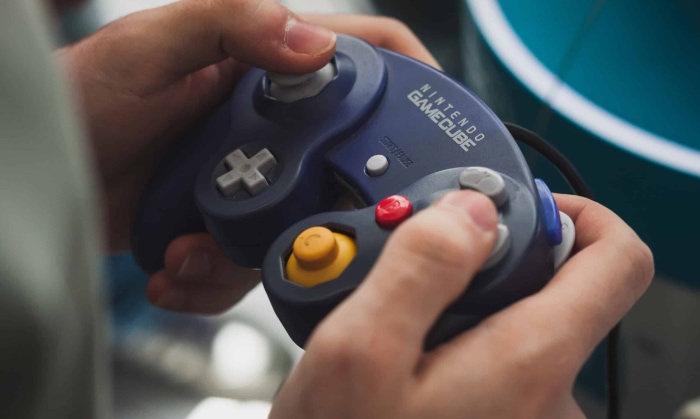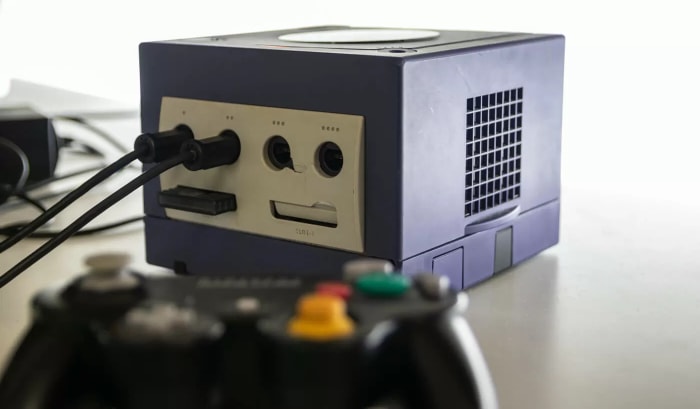Why Are GameCube Games So Expensive? Unpacked

GameCube, Nintendo’s sixth-generation console, may not have been the most commercially successful platform of its era, but it has gained a cult following and immense respect among gamers. Yet, if you’ve recently tried to purchase games for this beloved system, you’ve likely experienced sticker shock.
Why are GameCube games so expensive, especially when compared to titles from the same generation? The phenomenon is more complex than it appears, driven by a web of interconnected factors ranging from the rarity of physical copies and nostalgia-fueled demand to intellectual property constraints and market dynamics.
Rarity of Physical Copies
The concept of rarity is a fundamental driver behind the high cost of GameCube games. Limited releases and production runs mean that some titles are inherently difficult to find, making them prized possessions among collectors and fans.
Limited Releases and Production Runs
Often, game publishers decide on a production run based on expected demand. If a game is projected to be less popular, it’s likely to have a smaller production run.
For GameCube, several titles had limited releases due to factors such as niche genres, experimental gameplay, or being late in the console’s life cycle. As a result, these games became scarce over time.
Effect of Rarity on Prices
When supply is limited and demand remains constant or increases, prices naturally inflate. This basic economic principle holds true for GameCube games.
The rarer a game is, the more valuable it becomes, particularly if it also has qualities like high gameplay value, a strong storyline, or iconic characters. This leads to bidding wars among collectors and enthusiasts, further driving up the cost.
Case Examples of Rare GameCube Titles
To put the above points into perspective, let’s consider some GameCube games that have become notably rare and expensive:
- Fire Emblem: Path of Radiance – A tactical role-playing game that had a limited release and has now become a collector’s item, often selling for hundreds of dollars.
- Skies of Arcadia Legends – Originally a Dreamcast title, its GameCube release was limited, making it one of the more expensive games to buy today.
- Cubivore: Survival of the Fittest – This game was not widely popular upon release but has gained a cult following. Its limited run has made it quite expensive on the secondary market.
- Pokemon Box: Ruby and Sapphire – While not a traditional game, this utility software for managing Pokémon had a very limited release, making it highly sought after today.
Nostalgia and Collector Demand
Another powerful factor contributing to the high prices of GameCube games is the influence of nostalgia and the growing community of collectors. Many gamers harbor sentimental attachments to titles they enjoyed during their youth, and as these gamers grow older and gain disposable income, they are willing to invest in reliving those experiences.
The Role of Nostalgia
Nostalgia is an emotional and psychological phenomenon that connects individuals to past experiences, and it has a very real economic impact. Games that evoke a sense of nostalgia often see heightened demand, as older gamers seek to relive memorable moments from their formative years.
This increases competition among buyers, resulting in elevated market prices for those particular titles.
Increasing Number of Collectors
Game collecting has grown substantially as a hobby, adding another layer of demand to the market. Collectors seek out games not just for their gameplay value, but also for their significance in gaming history or their role in a beloved franchise.
Many collectors are willing to pay premium prices for titles that complete a collection, are in mint condition, or have added bonuses like original packaging and manuals.
Interplay of Rarity and Nostalgia
Interestingly, nostalgia and rarity often influence each other in a reinforcing loop. A game that is rare can become more desirable due to its scarcity, adding to its nostalgic value.
Conversely, a game that is highly nostalgic can become rare because of heightened demand, leading to increased scarcity and, therefore, higher prices.
Market Examples
To visualize the impact of nostalgia and collector demand, consider the following:
- The Legend of Zelda: The Wind Waker – This title was relatively popular when released, but its value has surged, fueled by nostalgia and its importance in the Zelda series.
- Super Smash Bros. Melee – While not exceedingly rare, the game is a staple of childhood for many and continues to have an active competitive scene, keeping demand—and prices—high.
- Metroid Prime – Part of a storied franchise, this title is collected not just for its gameplay but also for its significance in the Metroid storyline, adding to its market value.
Preservation of Quality

High-quality preservation of both GameCube discs and hardware contributes to the rising costs of the games. Unlike some other media that degrade significantly over time, GameCube games were built to last.
Build Quality of GameCube Discs
GameCube discs are known for their durability. They are manufactured using high-quality materials that are less susceptible to scratches, cracks, or warping compared to discs of some other platforms.
This longevity means that even second-hand copies can function like new ones, elevating their market value.
Durability of GameCube Hardware
In addition to the durable discs, the GameCube console itself is robust. The cube-shaped design is sturdy and less prone to mechanical issues, unlike some consoles known for problems like the “Red Ring of Death.” Because of this durability, GameCube systems continue to function well, sustaining demand for the games themselves.
Well-Preserved Copies Demand Higher Prices
The superior build quality of GameCube games and consoles means that well-preserved copies hold their value over time. Collectors and enthusiasts are willing to pay a premium for games in excellent condition, often with original packaging, further pushing up prices.
Comparison with Other Platforms
While it is not the only durable platform out there, GameCube does stand out in terms of longevity. For example, CDs for the PlayStation are generally more prone to scratches, and Xbox 360 consoles had issues like the aforementioned “Red Ring of Death.” This comparative durability makes GameCube games more valuable in the eyes of collectors and general consumers alike.
Lasting Impact of Quality on Prices
In a market where consumers are conscious of the lifespan of their purchases, the lasting quality of GameCube games serves as a justification for their high prices. Not only do these games offer a nostalgic or collectible value, but they also provide a practical, long-lasting experience, further elevating their worth in the eyes of buyers.
Intellectual Property Constraints
Intellectual property constraints present another layer of complexity in the high pricing of GameCube games. Licensing issues often prevent the re-release or digital availability of certain titles, thereby increasing their scarcity and, by extension, their cost.
Licensing Issues Limiting Re-Releases or Digital Availability
GameCube games often feature characters, music, or settings that are subject to licensing agreements. When these licenses expire or cannot be renewed, it makes re-releasing the games a legal challenge.
As a result, certain titles remain confined to their original GameCube release, making them rarer and more expensive.
Case Studies of Popular Games Affected by Intellectual Property Constraints
Several GameCube titles have become expensive primarily due to licensing constraints. Notable examples include:
- James Bond 007: Nightfire – Due to licensing restrictions surrounding the James Bond franchise, this game has not seen a re-release, making original copies highly valuable.
- NBA Street V3 featuring Mario – This game’s crossover between NBA players and Nintendo characters makes for a complicated licensing environment, restricting its re-release.
- Teenage Mutant Ninja Turtles: Battle Nexus – The TMNT franchise has undergone various ownership changes, and as a result, re-releasing this title has become a complex endeavor.
Contributions of Intellectual Property Constraints to Rising Prices
When a title is subject to licensing restrictions, it often becomes a prime target for collectors. Knowing that the game is unlikely to be re-released or made digitally available, buyers are willing to pay premium prices for physical copies.
This creates an artificial scarcity, which in turn elevates the game’s value on the secondary market.
Economic Ramifications of Licensing Issues
Licensing constraints don’t just affect the availability of the game; they also influence its economic value. Because of legal restrictions, some games may never see a digital release, making the original physical copies the only way to legally own the game.
This exclusivity adds another layer to the economic factors driving up the prices of GameCube games.
Market Dynamics and Resellers
The activities of resellers and the broader dynamics of the marketplace further amplify the expensive nature of GameCube games. Fluctuating supply and demand, coupled with the role of resellers who are keen on capitalizing on these variables, contribute to a market environment where prices often soar.
Supply and Demand Fluctuations
The market for GameCube games is not static; it’s influenced by an ever-changing demand and a relatively fixed supply. Seasonal trends, announcements of new Nintendo products, or even social media buzz can generate sudden spikes in demand, leading to higher prices.
The Role of Resellers
Resellers often act as market regulators. By buying up stock during periods of low demand and releasing it when demand peaks, they effectively control a significant portion of the available supply.
Their aim is, naturally, to sell at a profit, and this business model inevitably drives up prices.
Online Platforms and Auction Sites
Online marketplaces like eBay play a significant role in shaping the dynamics. These platforms offer an avenue for resellers to reach a global audience.
The bidding nature of these sites can lead to prices soaring far beyond the original retail value, especially for rare or highly sought-after titles.
Price Inflation Tactics
Some resellers engage in price inflation tactics, such as creating artificial scarcity by buying up large quantities of a particular game. Others may use algorithmic tools to dynamically adjust prices based on current demand.
These tactics contribute to volatile market conditions and can lead to exceedingly high prices for certain titles.
The Long-Term Impact on the Market
The influence of market dynamics and resellers is a long-lasting one. While individual games may see price fluctuations, the general trend over time has been an upward trajectory.
Resellers adapt their strategies to changing market conditions, ensuring that they continue to profit even as consumer tastes evolve.
Conclusion
Taking all these factors into account, it’s clear that the high cost of GameCube games arises from a confluence of variables. From the rarity of physical copies and the impact of nostalgia and collector demand, to the exceptional preservation of quality and complex intellectual property constraints, each aspect contributes to the elevated prices.
Market dynamics and the influence of resellers add yet another layer, further amplifying the cost. Through a comprehensive examination of these factors, we gain valuable insights into why GameCube games remain not only culturally significant but also economically costly.


